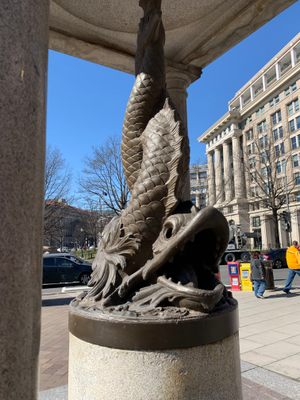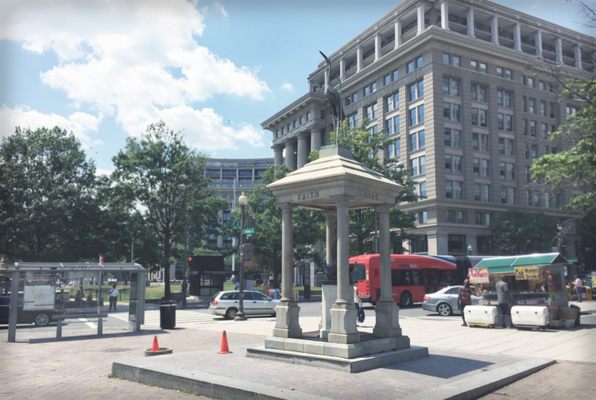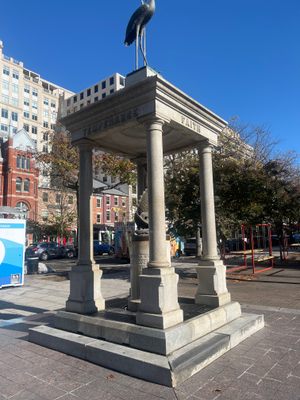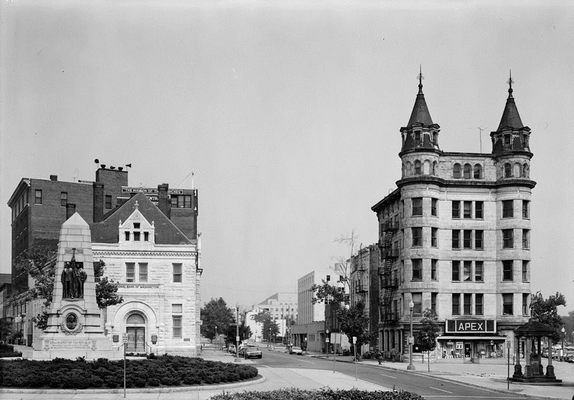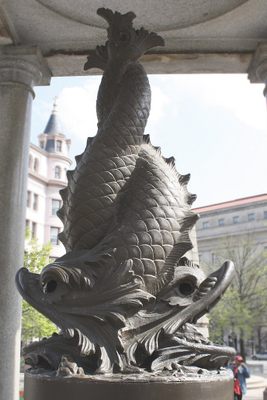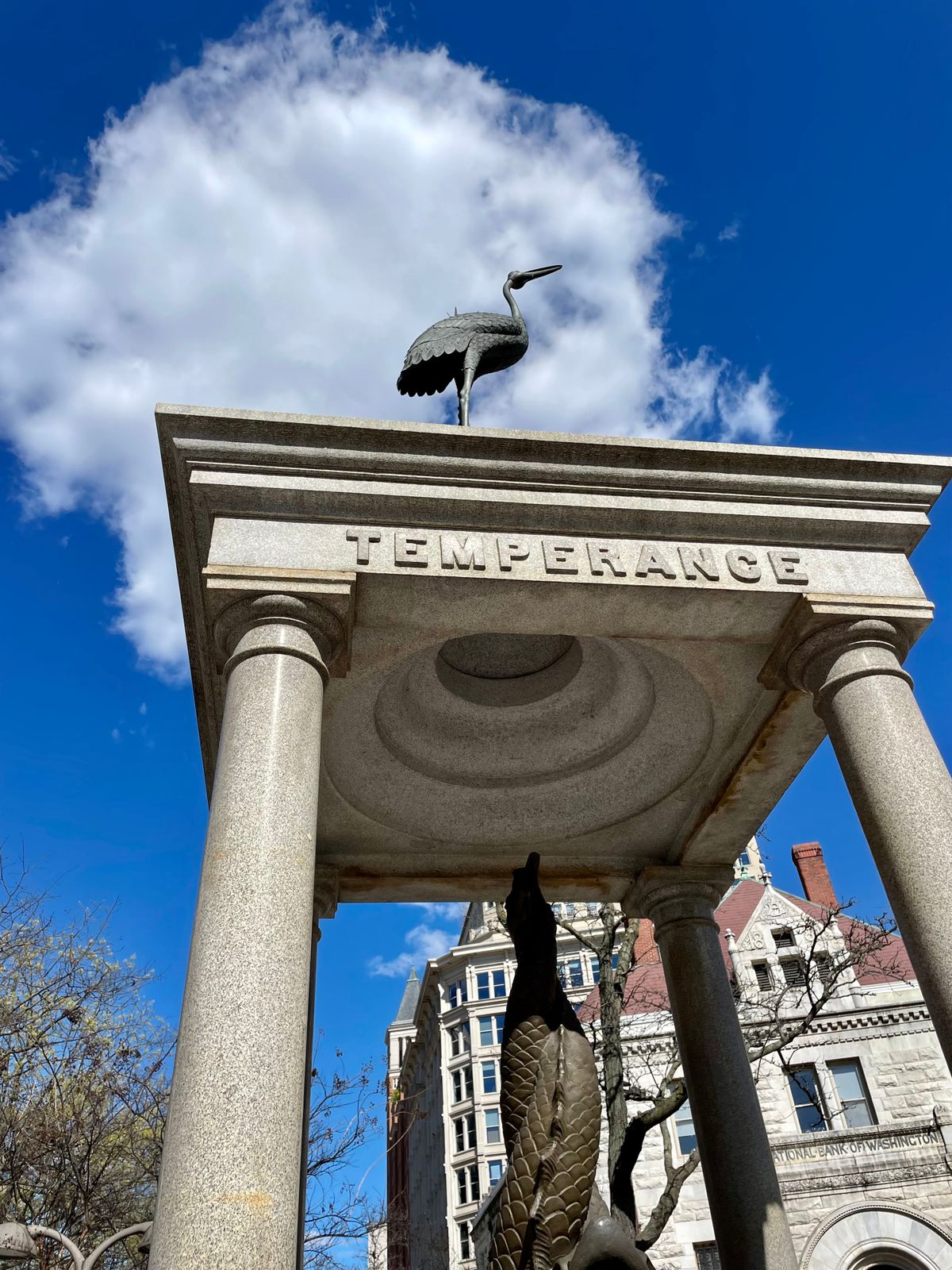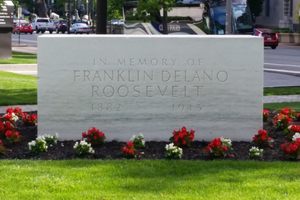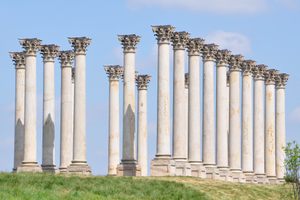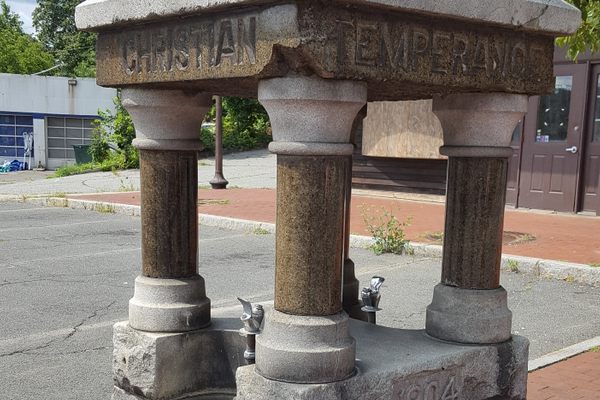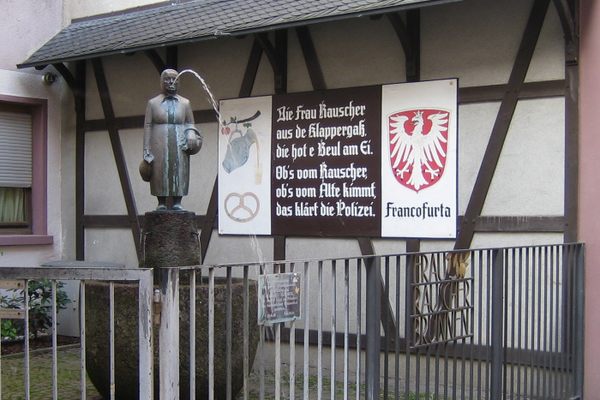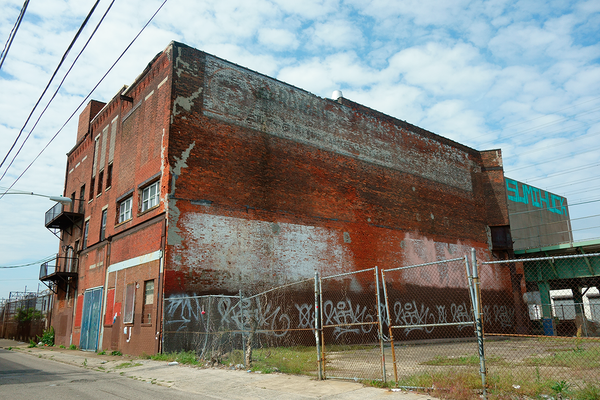About
In the late 19th century, Dr. Henry Cogswell, a wealthy dentist from San Francisco and a proponent of the prohibition of alcohol, had an idea. He believed that if people had access to free, cold water, they wouldn't be tempted to go into saloons to quench their thirst with alcohol.
To put his idea to the test, he paid for the installation of sixteen “temperance fountains” around the country. Today, people still drink booze despite ample access to water, and the only fully intact remnant of Cogswell's experiment stands in Washington, D.C.
Installed in 1884—with Congressional approval despite local dissent—at the prominent intersection of 7th and Pennsylvania Ave NW, the fountain is a small pavilion, topped with a bronze heron. Around the outside of the fountain are inscribed the words “Temperance,” “Faith,” “Charity,” and “Hope.”
The pavilion houses a sculpture of two entwined fish; originally, bronze cups chained to the fountain were provided to catch the water flowing from the mouths of the fish. A lower trough captured overflowing water for horses to drink. A reservoir below the fountain was filled with ice to cool the water. This costly routine maintenance quickly fell by the wayside, however, and the fountain ceased functioning (if it ever did) shortly after it was built.
Cogswell's fountains were largely unpopular. The fountain built in San Francisco was torn down by a mob who protested its ugliness. One in Connecticut was pulled out of the ground by a crowd and tossed into a lake. Others were simply removed over time, or altered to be less obtrusive, as temperance declined in popularity. The fountain in Washington, D.C., however, was mostly ignored and ironically spent many years after Prohibition in front of Apex liquor store.
The unsought, unused, unloved, and unsuccessful monument became, over time, a most ignominious landmark. In 1945, Senator Sheridan Downey introduced a resolution to remove the fountain, calling it a “monstrosity of art.” Congress, busy with legislation concerning World War II, allowed the resolution to die in committee. Ulysses S. Grant III, grandson of the former president and at the time in charge of the defense of Washington, D.C., argued against the fountain's destruction by calling it “ugly, but interesting.”
The fountain was moved a block north in 1987, to the corner of 7th and Indiana Ave NW. Editorials in The Washington Post have called it “Washington's ugliest statue” and criticized it for its “silliness, hideousness, futility of message. Cogswell's temperance fountains were so unpopular that they led to the creation of fine arts committees in many cities across the country, creating a mechanism for the refusal of other unwanted gifts of public art. The Washington fountain is listed on the National Register of Historic Places.
Related Tags
Know Before You Go
The fountain is in the plaza at the corner of 7th and Indiana Ave NW, easily found across the street from the Archives-Navy Memorial metro station.
Community Contributors
Added By
Published
September 29, 2016






